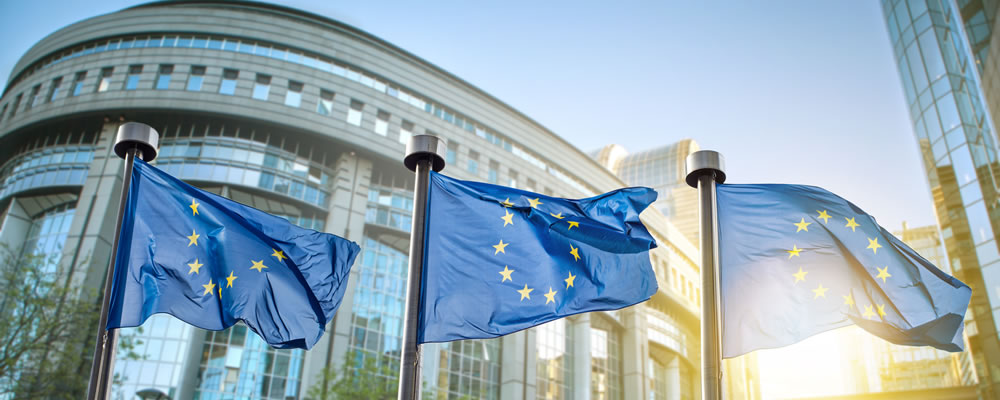Sentiment towards Euro exchange rates has remained muted thanks to poor German data and expectations for a dovish outlook from the European Central Bank’s September policy meeting.
- German Industrial Production unexpectedly contracted in July – Signs from Eurozone’s powerhouse economy continued to paint discouraging picture
- Mixed UK data returned Pound to downtrend – Confidence in post-referendum economy weakened
- Odds of 2016 Fed rate hike limited by disappointing US data – Slowing economic indicators weighed on US Dollar
- EUR exchange rates forecast to trend lower ahead of ECB meeting – Policymakers expected to take dovish outlook
Even so, the weakness of the Pound has helped to keep the EUR GBP exchange rate on an uptrend, thanks to persistent worries over the future of the UK economy post-Brexit.
Euro (EUR) Downside Bias Forecast Ahead of ECB Meeting
Some reassurance for the Euro (EUR) came on the back of Tuesday’s raft of improved Eurozone Retail PMIs. Stronger showings in Germany, France and Italy helped to push the overall figure back into expansion territory in August, suggesting greater robustness within the currency union. However, the single currency’s uptrend against rivals was limited by a greater slowing in second quarter Eurozone government expenditure than forecast, as it slipped from 0.6% to 0.1% on the quarter. This would not seem to bode overly well for the outlook of the currency union, given that the European Central Bank (ECB) has made repeated calls for greater fiscal measures to support its monetary loosening program.
Greater disappointment for the Euro resulted from an unexpected slump in July’s German Industrial Production figures. While expectations had been for a weakening in output on the year markets were surprised to find that it had contracted by -1.2% rather than merely slowing to 0.2%. As this offered further evidence that the Eurozone’s powerhouse economy is not in the most robust of states investors were discouraged from buying heavily into the common currency. Even though the relative weakness of both the Pound (GBP) and the US Dollar (USD) limited those losses for the time being greater pressure is expected to mount on the Euro ahead of Thursday’s ECB policy meeting.
Mixed UK Production Figures Boosted EUR GBP Exchange Rate
Although the Pound got off to a strong start this week the ailing currency struggled to hold onto its initial momentum for long. Markets were not impressed to see that BRC Like-For-Like Sales had surprisingly deteriorated -0.9% in August, something that rather undermined the impression that the UK economy has entirely shaken off the impact of Brexit uncertainty. With the government continuing to lack any substantial message regarding the UK’s future outside the EU profit taking ensued, offering support to the Euro to Pound (EUR GBP) exchange rate.
July’s UK production figures proved to be a mixed bag on Wednesday morning, with the Industrial Production measure surging 2.1% on the year while Manufacturing Production fell short of forecast at 0.8%. In spite of the positive signs of resilience Sterling did not react well to the figures, trending lower against many of the majors in response. Should the afternoon’s NIESR GDP estimate for August also disappoint then the EUR GBP exchange rate could be boosted further.
US Dollar (USD) Struggled after Weak ISM Non-Manufacturing Index
Confidence in the ‘Greenback’ diminished further in response to a particularly weak ISM Non-Manufacturing Composite Index. Rather than showing a modest downturn as forecast the measure instead plunged from 55.5 to 51.4, a worrying sign even though the sector remained in a state of growth. Fresh evidence of slowness within the world’s largest economy did not offer investors any reason to favour the US Dollar, especially given the heightened state of risk appetite that dominated markets on Tuesday.
The disappointing nature of major US data in recent days has seen the odds of a 2016 Federal Reserve interest rate hike diminished, in spite of the persistently hawkish commentary of some policymakers. As researchers at RBS noted:
‘All in, these data along with the manufacturing ISM index, which signalled outright contraction, raise warning flags that momentum has slowed post Brexit. We still believe this cautious, risk adverse Fed will wait for more information on the outlook and hold off from raising rates this year.’
There is likely to be little opportunity for the US Dollar to mount a particular rally ahead of the weekend, with the Euro to US Dollar (EUR USD) exchange rate expected to remain on a stronger footing. Nevertheless, if markets are inclined to assess that the ‘Greenback’ has been oversold recently then the US Dollar could still see a rebound in the short term.
Current EUR, GBP, USD Exchange Rates
At the time of writing, the Euro to Pound (EUR GBP) exchange rate was trending higher at 0.8396, while the Euro to US Dollar (EUR USD) pairing was trending narrowly in the region of 1.1240.



